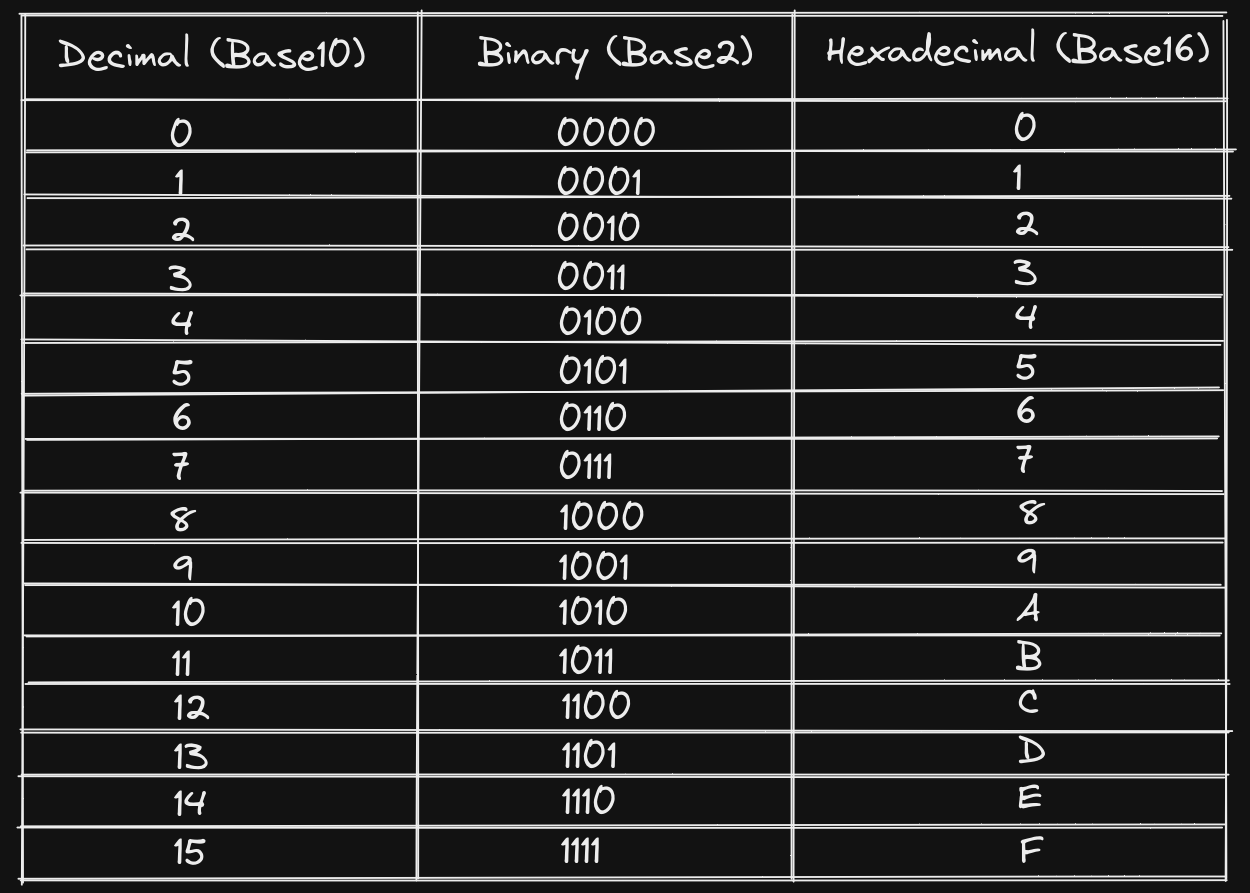Binary and Hexidecimal
 David Yau
David YauSimply Binary and Hexidecimal are different numbering systems. The numbering system we use in everyday life and math is base 10. 10 due to having the digits 0-9. There no innate reason to use base 10, we probably choose it as we have 10 fingers to count and the success of the Hindu-Arabic numeral system.
Binary is base 2 while Hexidecimal is base 16. Binary uses the digits 0-1. Since we don't have more digits than 0-9 we substitute the letters A-F (case insensitive) in place of 11-15.

Computers use binary as there is less chance of misreading electrical interference in a 2-state system. The higher the base use the higher chance there is a misreading. Trinary computers use base 3 and have trits instead of bits. However, all common modern computers are binary-based.
Computers thus can use both binary and Hexadecimal. Since Hexadecimal is easily converted to Binary and back as 4 digits of binary can represent 1 digit of hexadecimal. A Hexadecimal is often used because a larger number can be represented with fewer digits. Most uses of Hexidecimal are to make computer numbers more human-readable.
The uses of Hexidecimal include MAC addresses, IPv6 addresses, Memory Addresses and some Colour Formats.
Subscribe to my newsletter
Read articles from David Yau directly inside your inbox. Subscribe to the newsletter, and don't miss out.
Written by
